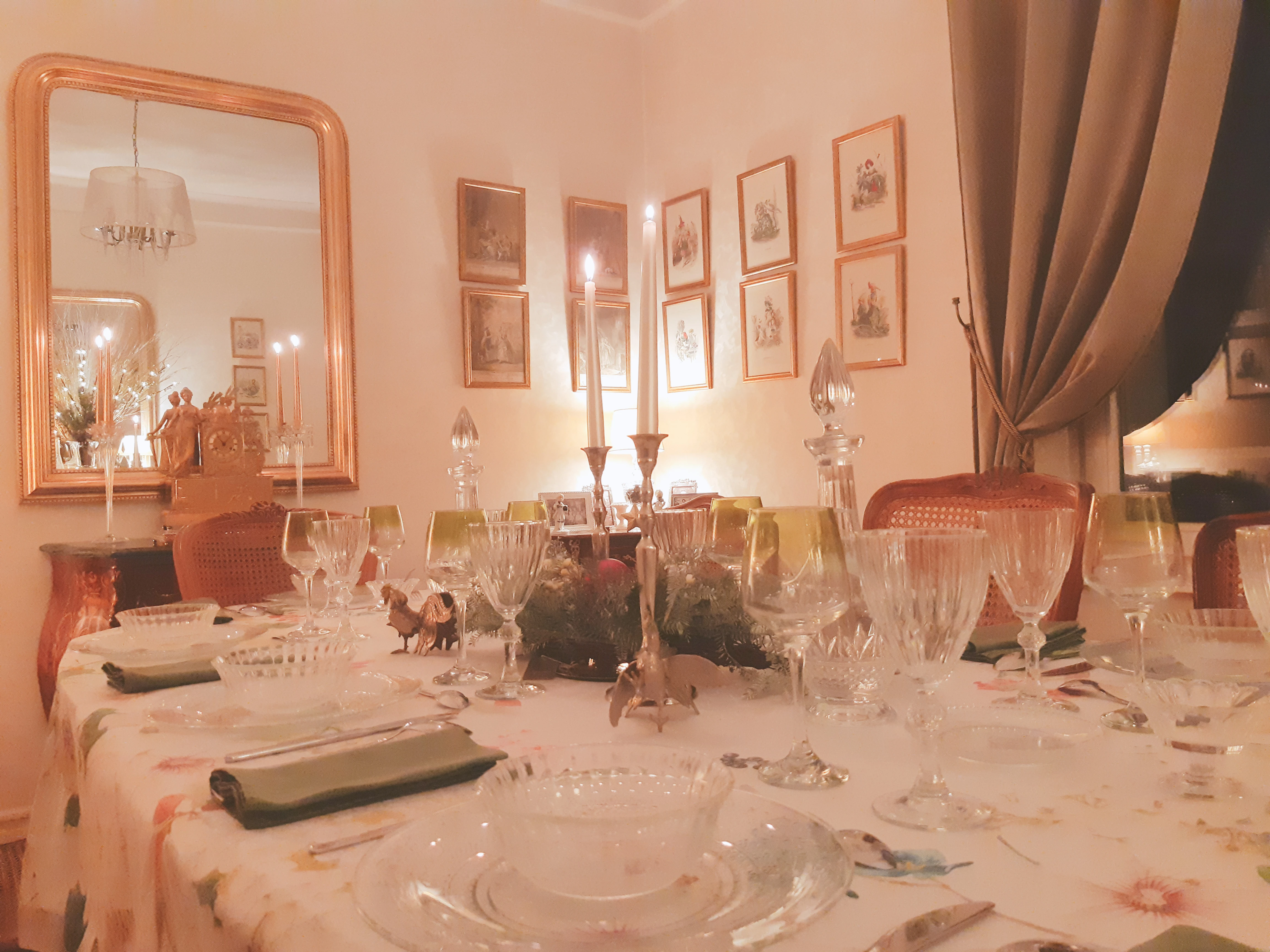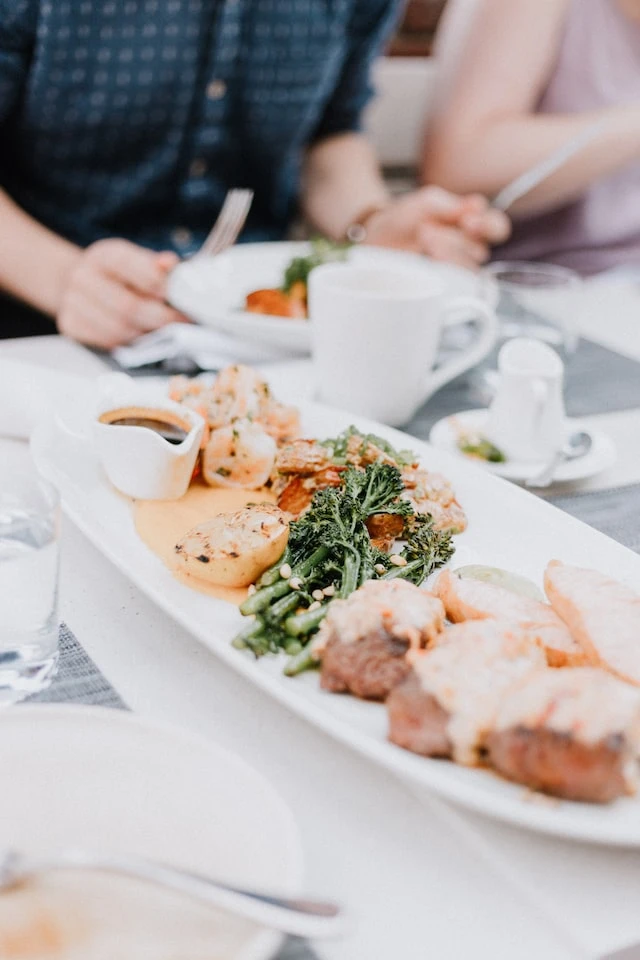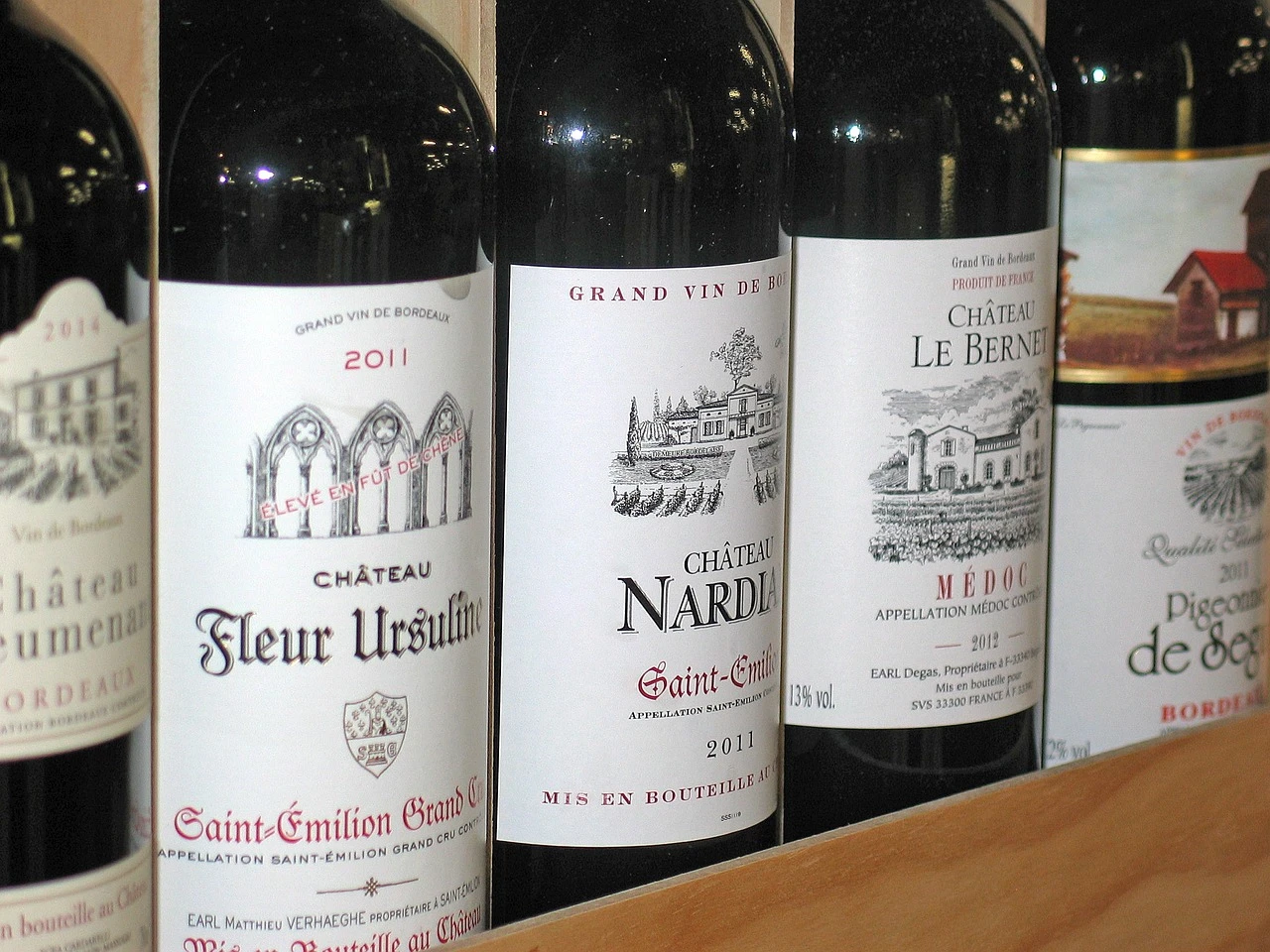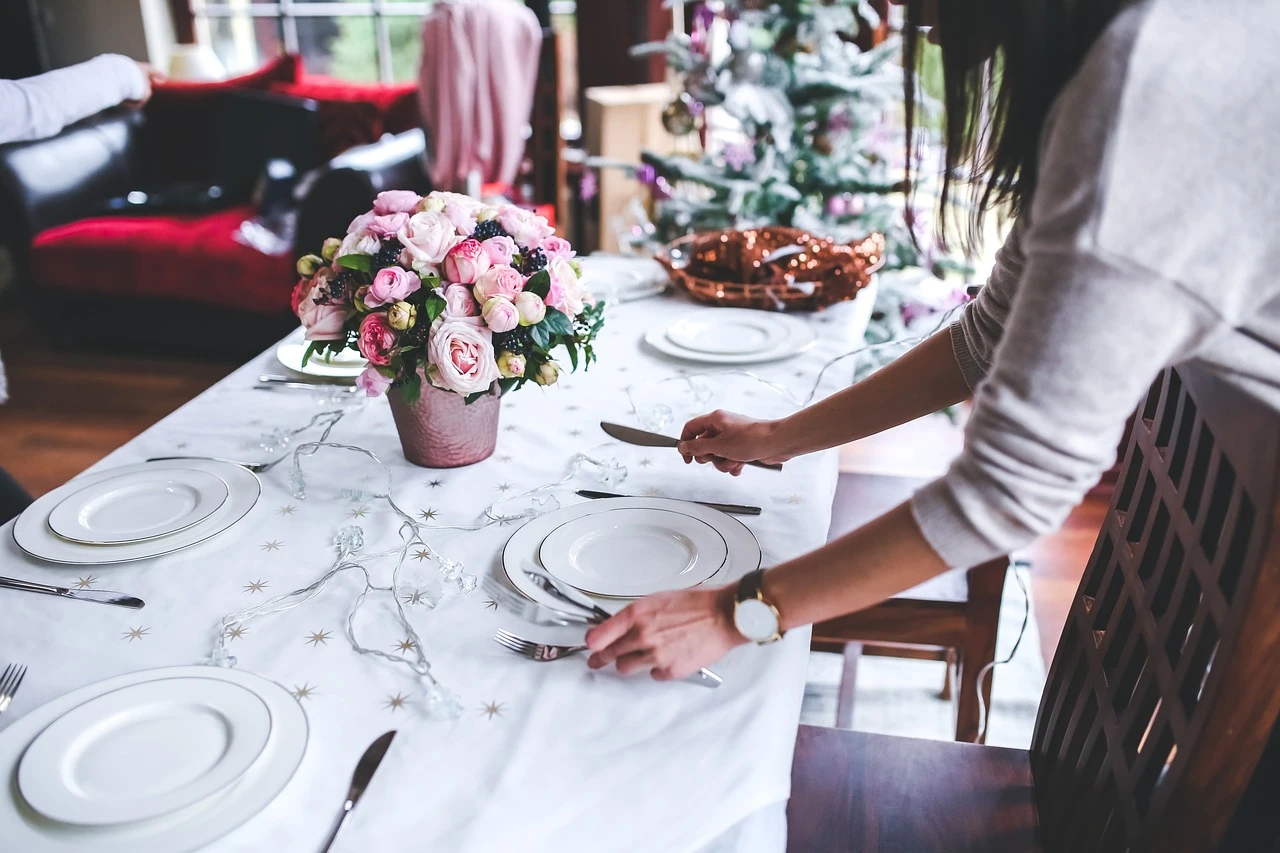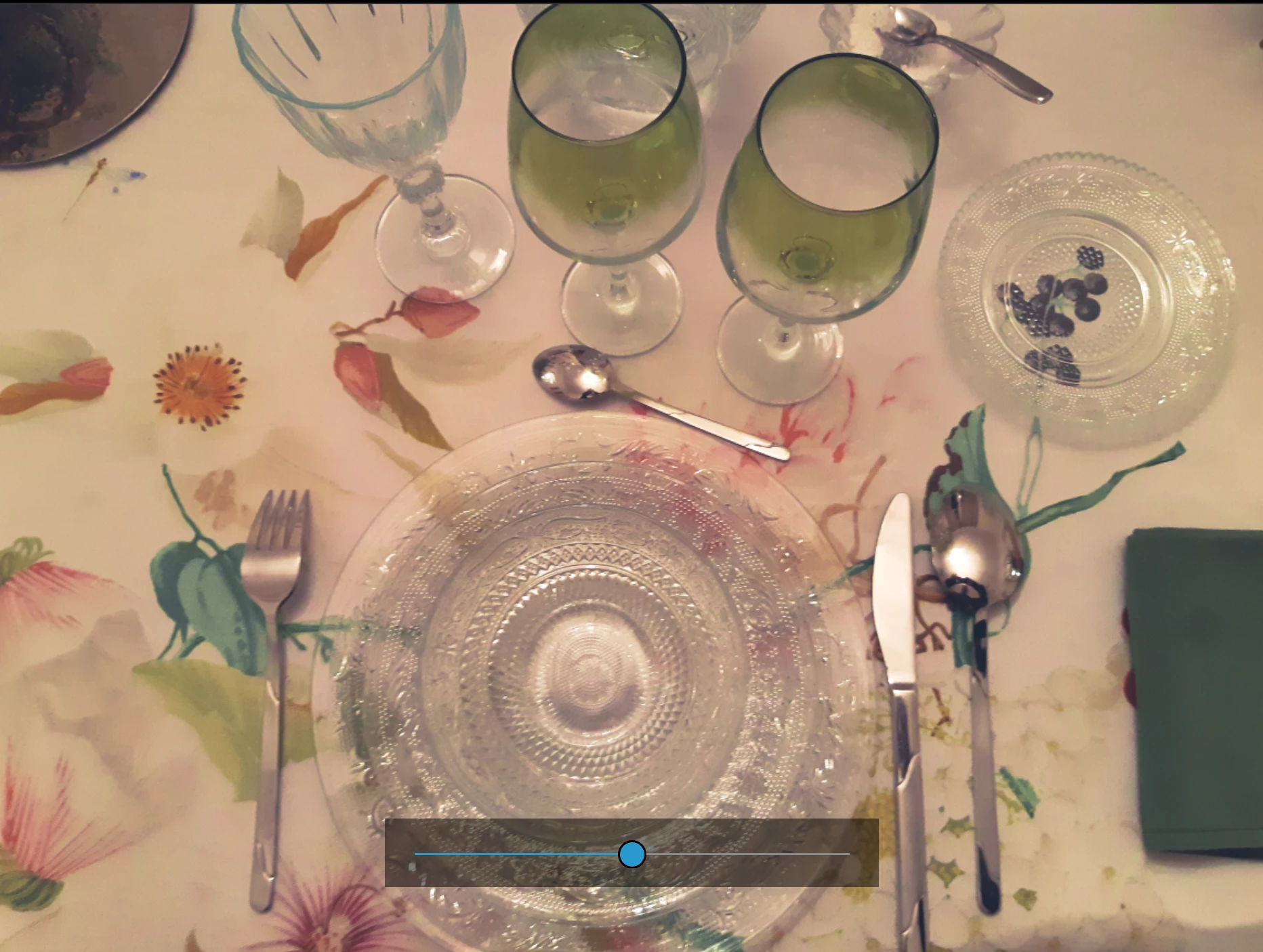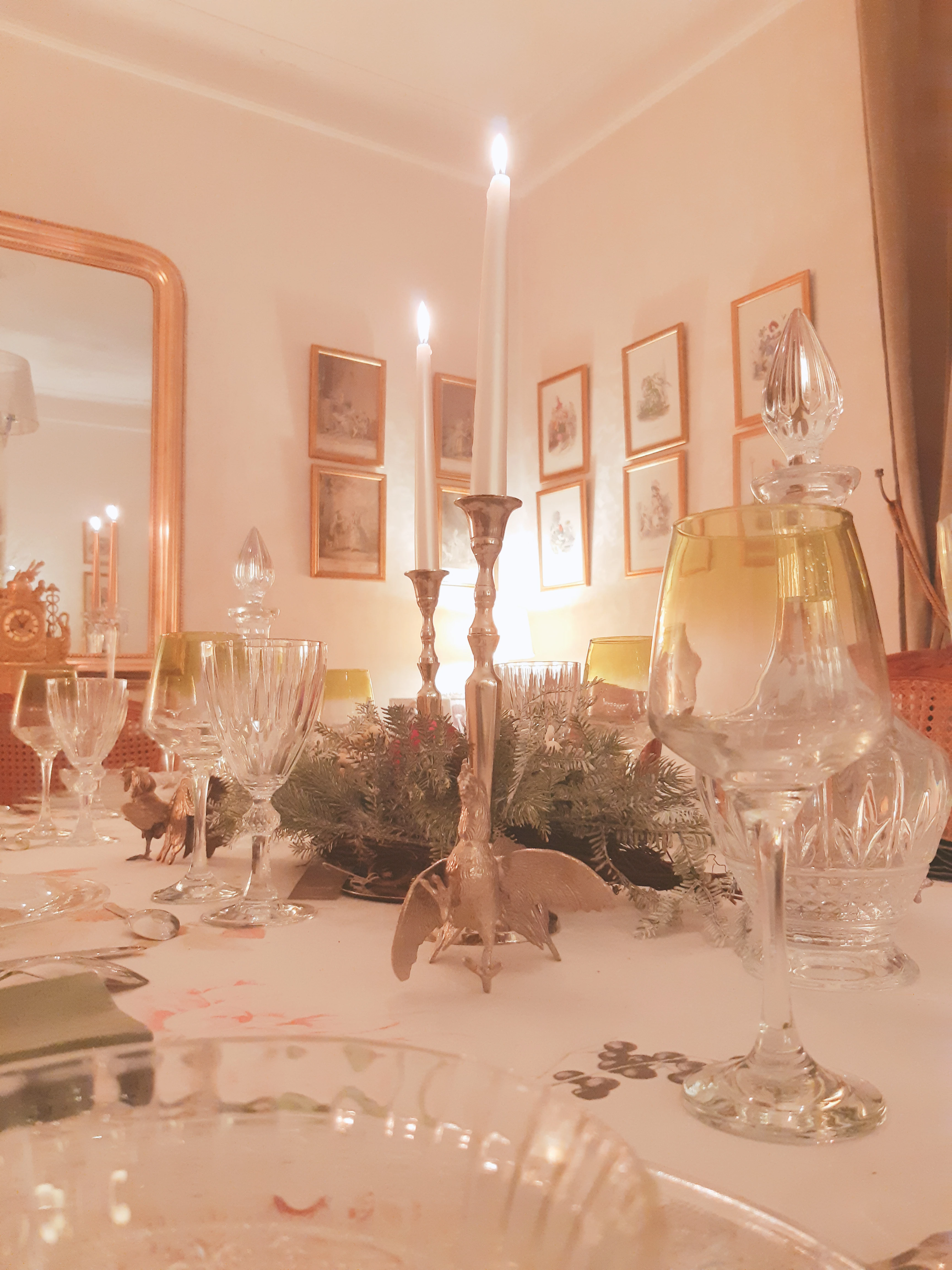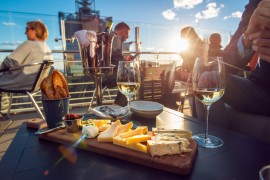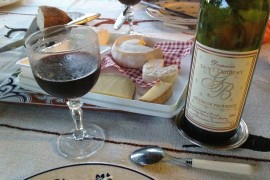The secret: organization.
Everything you are going to read here has a double objective: that you are proud and comfortable during the dinner, but above all that your guests are at ease, happy to be there, and that they leave delighted to have dined at your place and with you. "With you" is very important. It is necessary to organize things as much as possible beforehand so that you will be absent from the table as little as possible on the D-day... So anticipate! (It sounds a bit military, but organization is sacred...).
A French table / (c) Monsieur de France.
First, who is invited?
It's important to decide who you're inviting to dinner, because it's a subtle balance you'll have to find between the shy and the loud, the young and the not so young, the men and the women, the singles and the couples... So, first thing to do: the guest list, trying to find people who will get along well, even if, to tell the truth, it is always a kind of bet. A bet that also depends on you and your way of receiving, we will come back to this... If in doubt, move some guests to the next dinner. You can have dinners for 4 or 6, but the best is 8. This number allows you to make your own dishes without too much difficulty. You can of course go beyond that but the number should always be even even if you are single.
Our advice:
- Always an even number
- Mix generations.
- Mix professional situations.
- Mix opinions.
- Always put yourself in your guests' shoes.
What would we eat ?
Remember, what we're about to eat must please your guests first and you second. The menu is very important. It's up to you to imagine it in relation with the season as much as possible. In the summer, we like light dishes, and in the winter, we are not against a dish with sauce. It is also very important to know what your guests like. You may want to ask if they have any allergies or if they really dislike a dish. It avoids serving shrimp to someone who is allergic, or pork to someone who doesn't want to eat it for reasons of conviction. In the same way you will know if someone is vegetarian... In short, we try to know, and we do according to the tastes of the guests and what we feel like cooking.
Our advice:
- Never try anything new. The dinner must be a success, don't take any risk (and imagine that someone is sick, awful no?).
- Never serve the same thing to someone twice. Write down what you serve in a notebook and the corresponding guests (yes, you will see, it's a good idea).
- On the contrary, if you are bad in the kitchen, choose a dish that you succeed and make it "THE" dish that is served at your place and not elsewhere. (I know, I know, it's a lot of work...)
- Also, never the dish that you have already been served at one or other of the guests.
- In family... We forget the typical dish of the grandmother if the guests are family, the memories embellish everything including the roast of grandma, you will never manage to make her forget this sacred grandmother (that's how it is: granny always wins.).
Every dish is strategic, choose wisely! Photo by Priscilla Du Preez on Unsplash
What should we drink?
You choose, especially the wines. Remember that we usually serve white wine with fish and red wine with meat. You can also serve sweet wine for dessert.
Our advice
- Trust your wine merchant for the choice of wines.
- Try to serve wines that "tell a story", your story. Souvenir of a vacation for example.
- Don't forget that wine is also a signature. Not good enough, it will make a bad impression... And so will you (so don't be cheap!)
Wine is sacred! Choose well and don't be stingy! Image by Kerstin Riemer from Pixabay
Do as much as you can as soon as possible
Your goal should be to always be available and especially present at the table when you entertain. Therefore, you should do everything possible not to leave the table or the dining room too much. To make this possible, you should prepare as many things as possible in advance so that you only have to heat up the dishes, for example. They should be as ready to eat as possible. You don't pan-fry anything on the day, you don't shell the oysters on the day... Everything is already 80% ready when the guests arrive.
Our advice:
- Do your shopping at least the day before, so that if you forget something you have time to fix it.
- Think about the wine you want to serve and the dishes that this or that bottle will accompany.
- Set the table a few hours before you plan to host, so you can see if it looks good, and you can change your mind.
WARNING: we never prepare the plates in advance. The plates are already full, that's the privilege of the restaurant. You are at home so everyone will serve themselves as they wish when you present the dish. This is important because if you set the plates you put your guests in the case of being rude by not finishing them and especially you prevent them from choosing what they like in the dish presented.
We set the table Image by Karolina Grabowska from Pixabay
Setting the table:
Offer a beautiful table to your guests, it is always a pleasure to see and a pleasure to sit on. Do not hesitate to match the tablecloth to the season (white, with flowers in summer, darker in winter ...). Don't hesitate to decorate it, but don't overdo it. Your guests must be comfortable, they must have some space. Above all, no fuss. Fussing serves no purpose other than to make you look pretentious and they don't mask anything that's missed.
Our advice:
- If possible, avoid flowers, at least fragrant ones. Some people are allergic to them, others don't like them, and they can bring back bad memories (for example, lilies that smell strong and are also often found... In funerals).
- Choose candles. They flatter the complexion and they offer a beautiful atmosphere.
How to set the table?
When you have laid the tablecloth, choose the dishes that you like best (if you have several services). Put the plates on first. Then, you will put the glasses, then "the cutlery" (knife, forks, etc...), the napkins and finally the decoration. Don't forget to provide a place for one or two bottles of wine. In general, there is one bottle for 4 people. If you have 8 guests, place a bottle of the same wine on each side of the table. Similarly for water, place a carafe for 3 or 4 people. Don't forget the salt that is accessible to guests.
Our advice:
- Folded napkins are nice, but it's a bit of a fuss and it's often less successful than the internet "tutorial" you watched. A folded napkin on the right side of the place setting is just as good.
- If you have space, don't hesitate to add a small bread plate in which you will place a small bread roll and some butter.
- Avoid wine decanters. It's old-fashioned. Choose bottled wine if it is "expensive" or well known, otherwise put it in small decanters and remember to "refill" them regularly during the meal.
- Take small carafes that are easy to lift, especially for water. You don't want to break your arm to refresh yourself (so forget the carafe of more than one liter).
How to put glasses at the table?
1 water glass (the largest) and 1 wine glass. Be careful, you need a glass for each "color of wine". If you serve a white wine and then a red wine, put two wine glasses. If you serve a sweet wine for dessert, put a third glass. In general, we put the water glass (the biggest) on the left, then the white wine glass and finally the red wine glass. So we recap: (from left to right) 1 water glass + 1 red wine glass + 1 white wine glass.
Our advice:
- Do not hesitate to "mismatch", in other words to mix the styles of glass for example. Goblet for water, stemmed glass for wine, etc...
- Wine glasses should be placed even if you know that a guest does not drink alcohol. The table must be homogeneous.
- Remember to fill half of the water glasses with fresh water a few minutes before entertaining.
CAUTION: the champagne flute is a special case. Normally, champagne is not served at the table. If you insist, bring it at the last minute. That said, the best thing to do is to serve champagne during the aperitif and at the end of the meal. Not during (don't ask me why that is).
How to set the table?
There are two possibilities: with or without soup. Always put the knife on the right and the fork on the left. In all cases, note that the fork is placed pointing down (in Great Britain, it is the opposite.) The knife is placed with the sharp side towards the plate. The dessert spoon is placed on top of the plate, facing to the left.
If you are serving soup, you place a large spoon to the right of the knife.
There is a whole range of cutlery, and it used to be that there was one utensil for each dish, so there were quite a few forks on the left and quite a few knives on the right. If you find yourself in this situation one day, in a fancy restaurant or at a dinner party, you always take the cutlery from the ends first. And we do this with every course.
Our advice:
- Fork tips are always pointed downward in memory of aristocratic tables that used forks with coats of arms engraved on the upper side handle.
- Fork tips pointing upwards is the privilege of restaurants. You are not restaurateurs. You are entertaining.
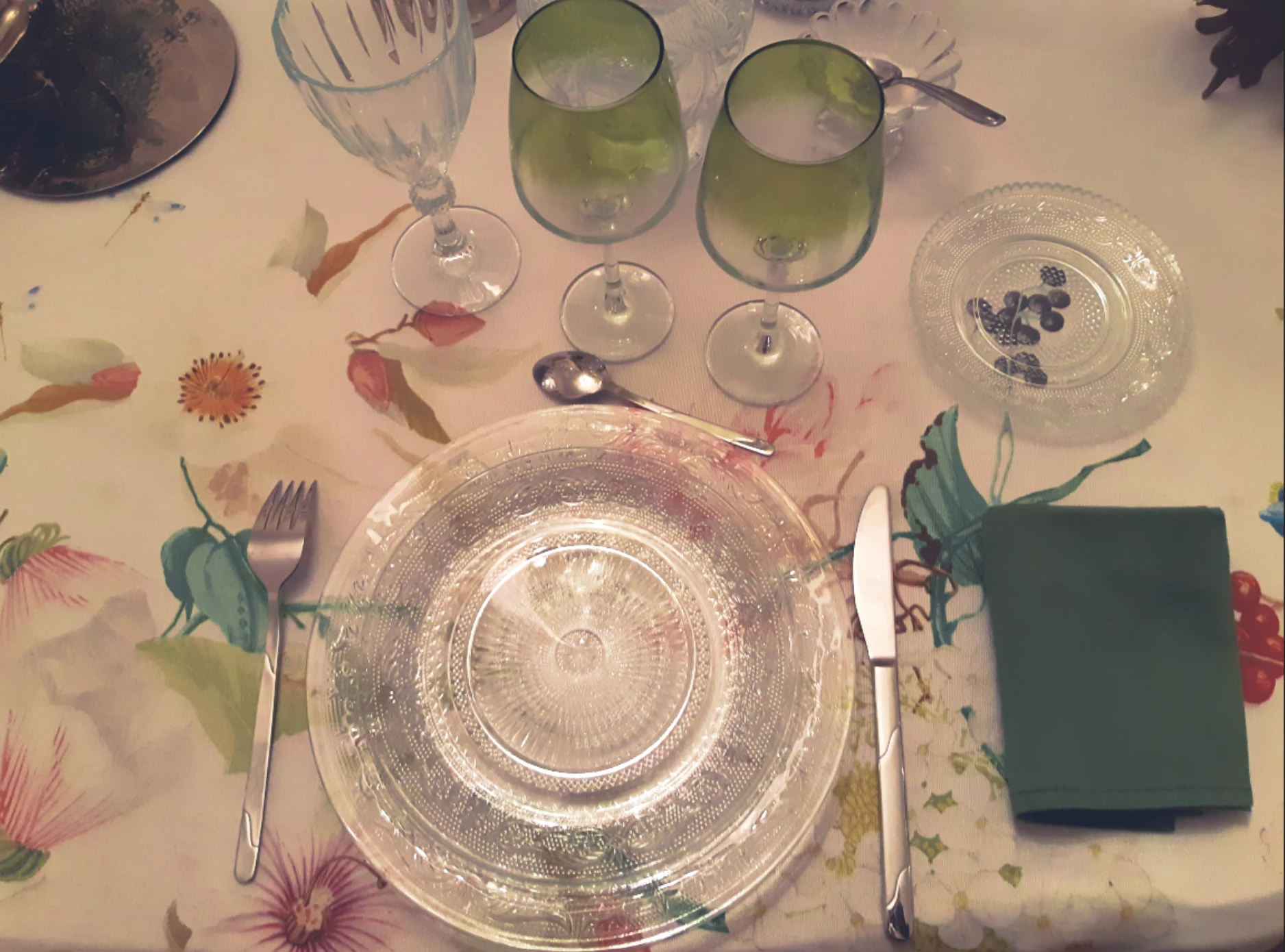
A table set for a "classic" meal (3 glasses, starting with the water glass, fork on the left, knife on the right). (c) Monsieur de France
A table set for a meal with soup (3 glasses, starting with the water glass, fork on the left, knife on the right and large spoon next to the knife). (c) Monsieur de France
The day
Entertaining is always a stressful moment, at least at the beginning. If you have done things right early, you will be relaxed. The objective now is to be present for your guests and to allow them to spend a good evening. There are some codes that make this even easier.
Think about the table plan
It is very important! First of all, it allows your guests not to hesitate about the place you have reserved for them at the table. Then, it allows you to have a "chemistry" in your dinner by putting together people who can "match" and by spacing out those you feel less close. Always remember to alternate genders. You can also honor guests with a seating plan. For example: you can put the most important man on the right of the "hostess" and the most important woman on the right of the host.
Our advice:
- If you are single you can offer the most important person hierarchically to preside over the table (and you put yourself in front).
- We always separate couples of more than one year. First of all, it is a tradition (we don't separate for a year the couple that God has united), and most of all it allows them to have things to talk about when they come back from the dinner.
- The younger the guests are, the further away they are from the host or hostess.
WARNING: dressing up for a party is fine, but not too fancy. If you know your friends will be wearing a simple little dress, don't pull out the big guns in terms of dress.
During the dinner:
You are entertaining so you need to make sure everyone is comfortable. When you welcome your guests, introduce them to each other (in general, we do not introduce a woman to a man, but a man to a woman). Think of the little information, or the little anecdote that will make everyone shine. During the meal, you must make sure to distribute the word.
At the table, pass the dish you are presenting to your guests (starting with the oldest woman). NEVER put the dish in the middle. You will always have someone who will want to help, do it wrong, or worse, break a glass trying to take things from the plate. Go around the table yourself and present the dish (always from the right). In France, the dish is always presented twice (so that guests can get a refill if they like it). In Great Britain only once.
Our advice:
- Never serve on a plate. This is not a restaurant
- Pass the dish to the guests.
What do we talk about at the table?
Everything! But some subjects should be avoided. Money for example, politics too (it is rare to have a table around which everyone agrees). Remember to put water in your wine if the discussion gets out of hand. As a family, you can also usefully avoid talking about parenting. Try not to dwell on a subject. Don't flatter yourself. Don't monopolize the floor.
Our advice:
- If someone talks little, make them shine.
- If someone talks too much, try to bounce back to someone else.
A meal with friends / Photo by krakenimages on Unsplash
And if you're invited?
Put yourself in your host's shoes and the shoes of others. This will help you avoid several pitfalls.
Our advice:
- Arrive on time. Never before. The person who invites you may not be ready or may be a little relaxed.)
- Be elegant. We go out of our way to be elegant even if it's been a rough day. It's the least you can do to thank the person who invited you and went to the trouble.
- Don't necessarily come with a bouquet of flowers. The host may not have several vases in case everyone else does as you do and will have to go away to cut the stems. Have it delivered the next day as a thank you if you want the flowers.
- Remember to bring something: chocolate, wine, a typical object if you come from elsewhere.
- We never offer decorations. Decoration is personal.
- You don't point your knife at someone while talking.
- We talk but not too much
- Don't monopolize the conversation but try to keep the conversation going with your neighbors.
ATTENTION: never sauce your plate. It is not done. At worst, pick a piece of bread with your fork. But hey...
Need ideas for cooking? Try our typically French gourmet recipes here!
P.S Sorry for our translator. He went to a fancy dinner yesterday, finished very very late and understands every other word today.

